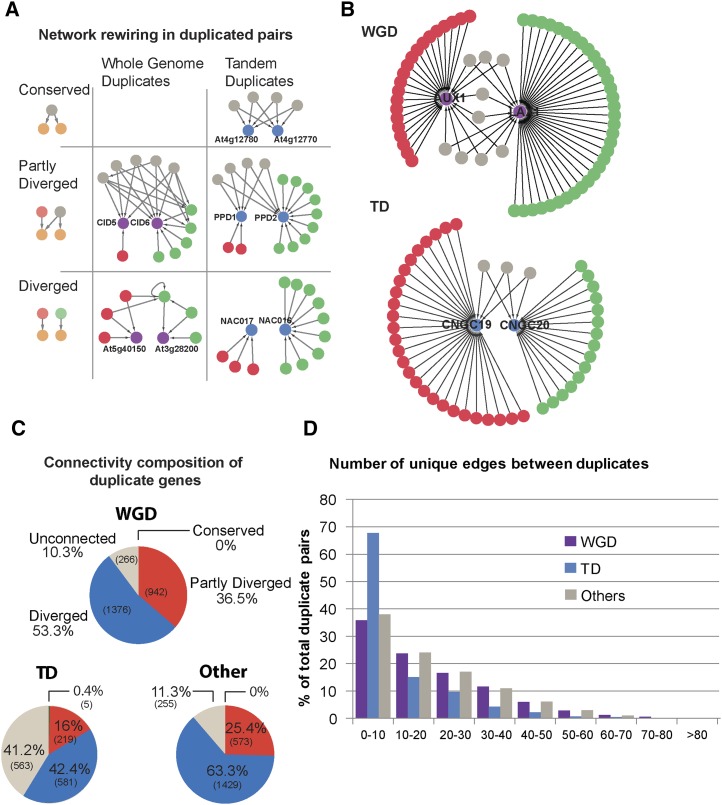Figure 2.
WGD and TD pairs have differing wiring outcomes following duplication. A, Network rewiring between pairs may not change after duplication (conserved), pairs may have some common and some unique connections (partly diverged), or they may have no connections in common (diverged). Examples from each scenario from the two classes of duplicates are presented; there are no conserved examples from the WGDs. Within the specific examples, purple and blue circles represent WGD and TD pairs, respectively. Red and green circles are genes and interactions unique to each gene within the pair, and gray circles are shared genes and interactions. Lines with arrows indicate regulatory interactions, with the arrow pointing toward the target gene. PPD1, PEAPOD1; PPD2, PEAPOD2. B, Examples of a partially diverged WGD and TD pair. Purple circles are WGD pair, and blue are TD pair. Red and green circles are genes and interactions unique to each gene within the pair, and gray circles are shared genes and interactions. Lines with arrows indicate regulatory interactions, with the arrow pointing toward the target gene. C, Connectivity composition in the WGD, tandem, and other duplicates sets. The number of gene pairs is in brackets. D, The number of unique edges between members of a duplicate pair.

